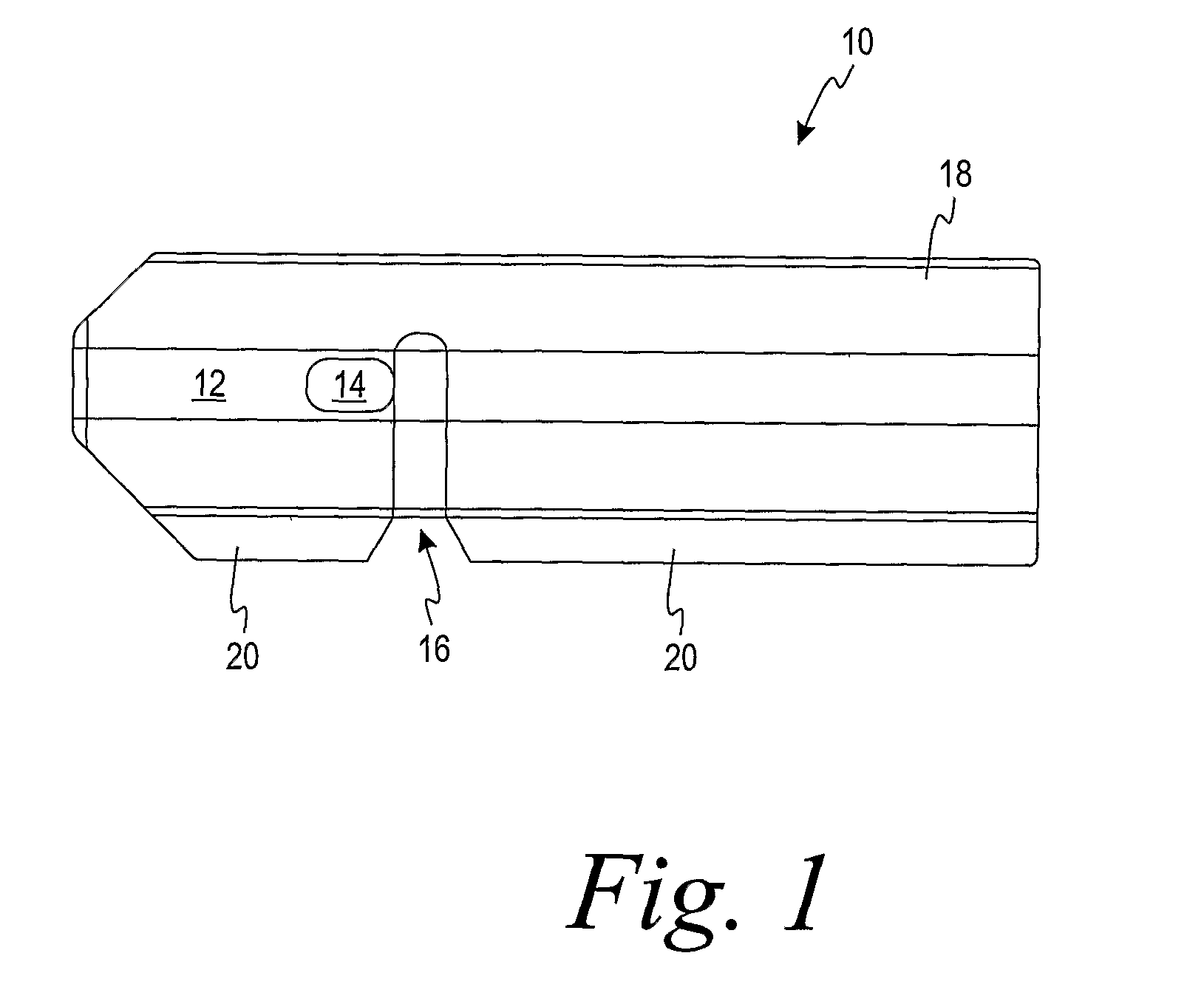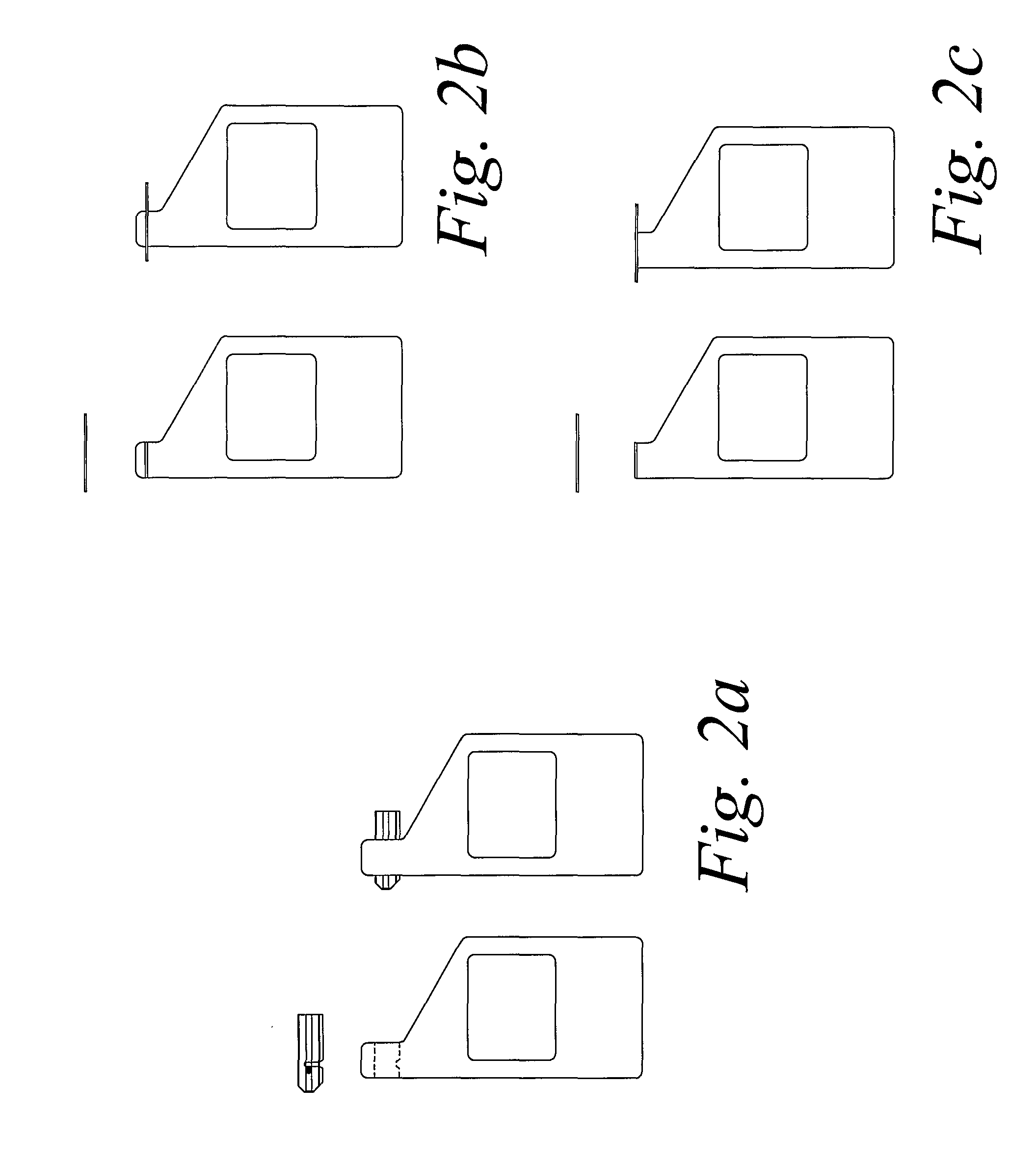Optical Sensor and Methods of Making It
a technology of optical sensors and sensors, applied in the field of optical sensors, can solve the problems of degrading the performance of the sensors and contamination of the instruments, and achieve the effects of facilitating the movement of liquid samples, proper alignment of the sensors, and convenient handling for users
- Summary
- Abstract
- Description
- Claims
- Application Information
AI Technical Summary
Benefits of technology
Problems solved by technology
Method used
Image
Examples
embodiment b
[0050] Alternative Embodiment B
[0051] The sensor of embodiment A wherein said sensor is substantially flat and adapted to be inserted into a slot in said meter with portions of said capillary channel, said air vent and said handling area extending outwardly from said slot.
embodiment c
[0052] Alternative Embodiment C
[0053] The sensor of embodiment B wherein said sensor is substantially flat and in the shape of a snow-boot adapted to be inserted into a slot in said meter with portions of said capillary channel, said air vent and said handling area extending outwardly from said slot.
embodiment d
[0054] Alternative Embodiment D
[0055] The sensor of embodiment A wherein said sensor is substantially flat and adapted to be positioned adjacent said meter with portions of said capillary channel, said air vent and said handling area extending outwardly from said meter.
[0056] Alternative Embodiment E
[0057] The sensor of embodiment A wherein said means for providing encoded information is a bar code.
PUM
| Property | Measurement | Unit |
|---|---|---|
| volume | aaaaa | aaaaa |
| optical response | aaaaa | aaaaa |
| area | aaaaa | aaaaa |
Abstract
Description
Claims
Application Information
 Login to View More
Login to View More - R&D
- Intellectual Property
- Life Sciences
- Materials
- Tech Scout
- Unparalleled Data Quality
- Higher Quality Content
- 60% Fewer Hallucinations
Browse by: Latest US Patents, China's latest patents, Technical Efficacy Thesaurus, Application Domain, Technology Topic, Popular Technical Reports.
© 2025 PatSnap. All rights reserved.Legal|Privacy policy|Modern Slavery Act Transparency Statement|Sitemap|About US| Contact US: help@patsnap.com



